Puttying
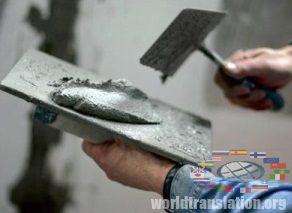
In the construction before the decorative treatment of the surface of walls or ceiling you should align it. To achieve this goal, you can use plaster or putty.  These two methods are completely different by application technique and used materials. So in which case, putty is needed? It is easy to find out. Using a level, you should measure up the treated surface and the maximum deviation. If it does not exceed 5 mm, then you should use putty.
These two methods are completely different by application technique and used materials. So in which case, putty is needed? It is easy to find out. Using a level, you should measure up the treated surface and the maximum deviation. If it does not exceed 5 mm, then you should use putty.
Of course, the work must begin with the preparation of the surface for processing. To do this, carefully clean it from the remnants of wallpapers, dust, whitewashing, etc. If the wall contains small bumps, they can be cut with a knife or to chop off with ax. 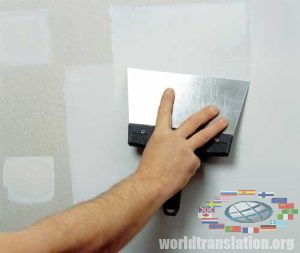 The following is the process of primer. For this dry primer is diluted with water according to the instructions on the package and is applied to the surface with a roller. It must be applied without gaps. Its practical to use a primer of deep penetration. After completing this process, you need to give the primer to soak and dry. It will take a couple of hours.
The following is the process of primer. For this dry primer is diluted with water according to the instructions on the package and is applied to the surface with a roller. It must be applied without gaps. Its practical to use a primer of deep penetration. After completing this process, you need to give the primer to soak and dry. It will take a couple of hours.
You need to remember that the putty of concrete walls should be produced with gypsum plaster. When the humidity in the room is quite high, then you need to use cement putty. 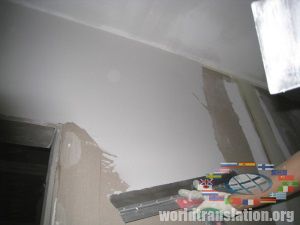 Special attention must be paid to the process of putty dilution in water. Usually necessary ratio of mixture and water is listed on the package. It is important to add water to the dry putty, and not vice versa. This will prevent the formation of lumps. When breeding you also need to constantly stir the solution and rub the small lumps. The final mixture should turn out homogeneous. For dilution you should use the water of room temperature, and carry out putty at positive temperature.
Special attention must be paid to the process of putty dilution in water. Usually necessary ratio of mixture and water is listed on the package. It is important to add water to the dry putty, and not vice versa. This will prevent the formation of lumps. When breeding you also need to constantly stir the solution and rub the small lumps. The final mixture should turn out homogeneous. For dilution you should use the water of room temperature, and carry out putty at positive temperature.
For putty of walls its convenient to use two spatulas of smaller and larger sizes.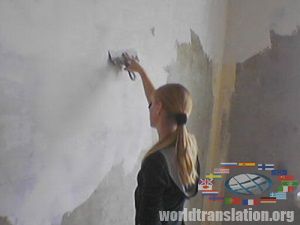 Initially putty is put on the second spatula, by which it is stretched directly over the surface. Its better to align surface with spatulas of large size. But large spatula needs more you applied force while stretching. It is important, that spatula was made of stainless steel. In another case on the wall can be left traces of rust. In order to putty rounded forms you need to use a soft rubber spatula.
Initially putty is put on the second spatula, by which it is stretched directly over the surface. Its better to align surface with spatulas of large size. But large spatula needs more you applied force while stretching. It is important, that spatula was made of stainless steel. In another case on the wall can be left traces of rust. In order to putty rounded forms you need to use a soft rubber spatula. 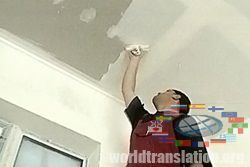 It necessarily must be white, because black rubber will leave on the wall traces of corresponding color. By experimentation you can determine the number of putty, which must be put to the spatula at a time.
It necessarily must be white, because black rubber will leave on the wall traces of corresponding color. By experimentation you can determine the number of putty, which must be put to the spatula at a time.
To get a perfectly flat surface its not enough one layer of putty. You need to inflict not less than three layers. 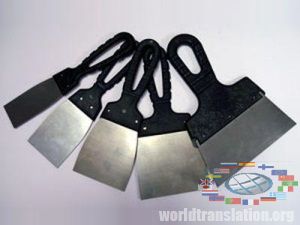 But you must remember, that the next layer is applied after complete drying of the previous. To align each of the dried layer you can use sand paper or sand mesh. After drying of the first layer its practical to cover it with primer. This course will give more strength for the covering, and further layers can be applied more subtly. The first layer is always applied with a starting putty. Finishing putty is used during application of the last layer. After complete drying of finishing layer on the walls can remain small unevenness. You need to smooth out them with a sand mesh.
But you must remember, that the next layer is applied after complete drying of the previous. To align each of the dried layer you can use sand paper or sand mesh. After drying of the first layer its practical to cover it with primer. This course will give more strength for the covering, and further layers can be applied more subtly. The first layer is always applied with a starting putty. Finishing putty is used during application of the last layer. After complete drying of finishing layer on the walls can remain small unevenness. You need to smooth out them with a sand mesh.
To avoid delamination of putty in the future you need to follow some rules. The consistency of putty solution must always be homogeneous. 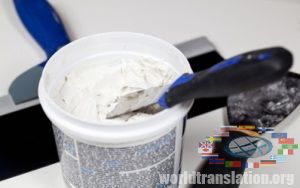 If the putty is held in several layers, then they must be completely dry before applying the next layer. There are moments, when you need to putty the walls which have good ability to absorb moisture. In this case, before starting a work you definitely need to moisturize the surface.
If the putty is held in several layers, then they must be completely dry before applying the next layer. There are moments, when you need to putty the walls which have good ability to absorb moisture. In this case, before starting a work you definitely need to moisturize the surface.